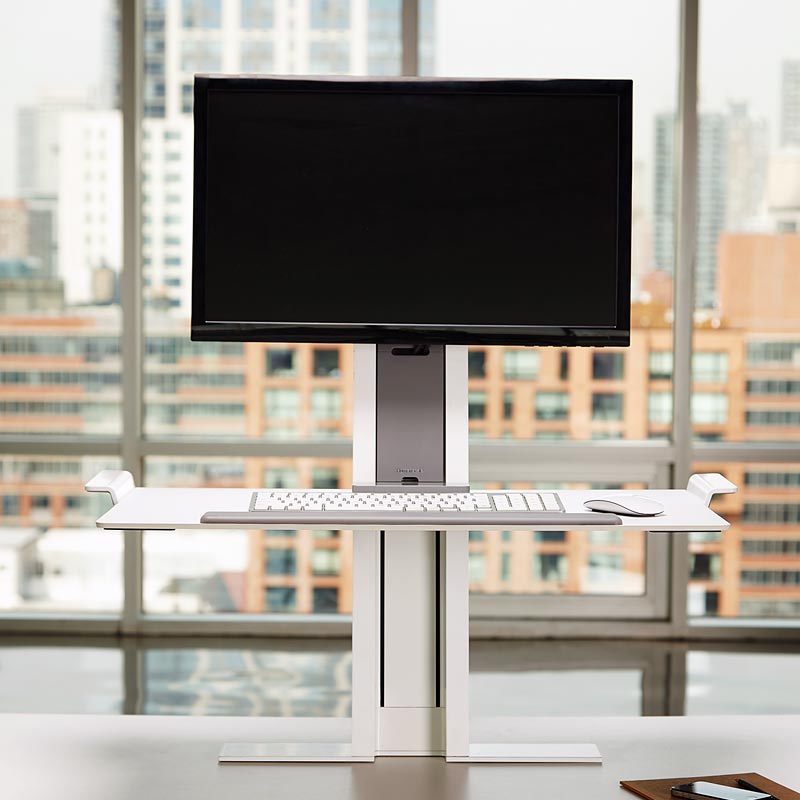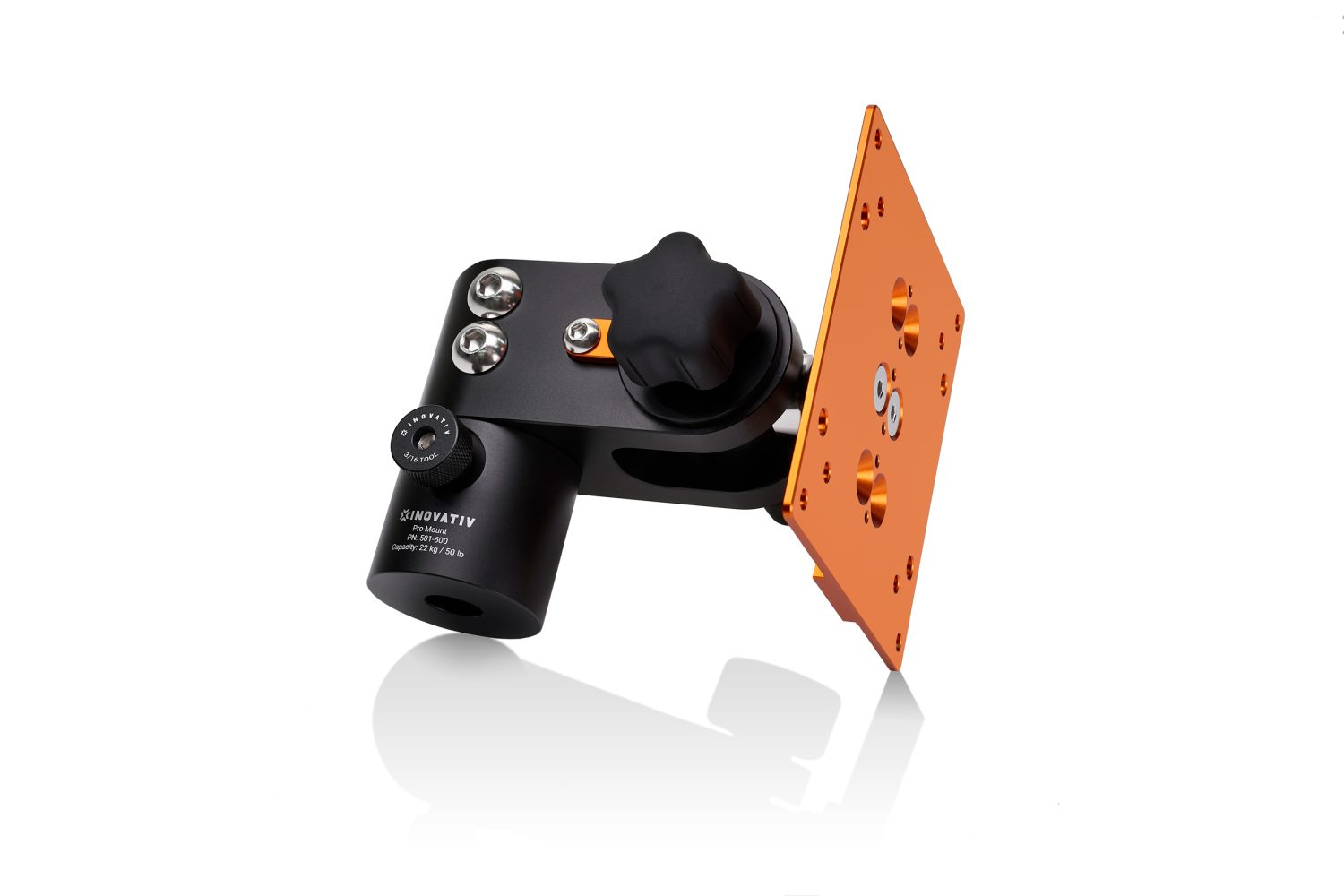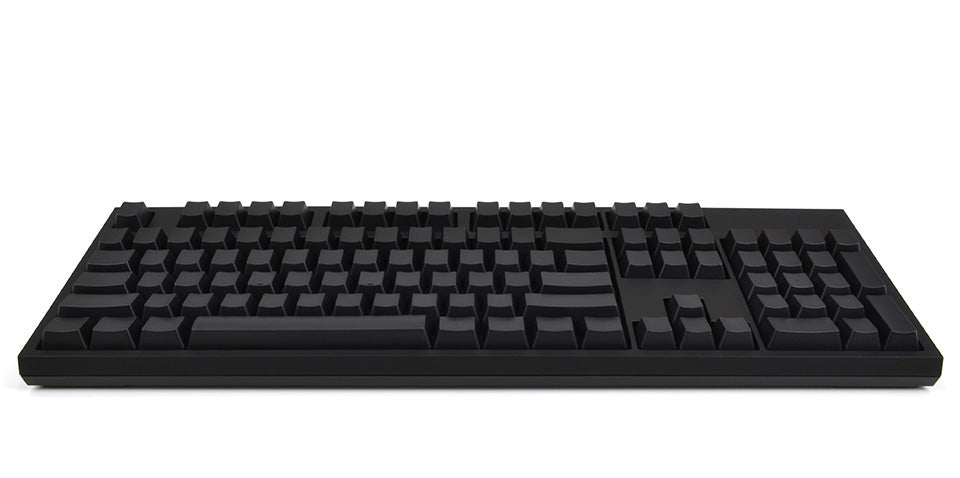
The Top Essential Ergonomic Products for a Healthy Workspace
Creating a comfortable and productive workspace is crucial for maintaining good health and well-being during long hours of work. To achieve an ergonomic setup that supports your body and promotes optimal posture, incorporating the right tools and accessories is essential. In this blog post, we will explore the top 10 essential ergonomic products for a healthy workspace.
From an ergonomic office chair and height-adjustable desk to an ergonomic keyboard, adjustable monitor stand, ergonomic mouse, monitor arm, footrest, ergonomic lumbar support cushion, task lighting, and cable management solutions, we will delve into each product's benefits and how they contribute to a healthier and more comfortable work environment. Let's discover how these essential ergonomic products can transform your workspace and enhance your overall well-being.
1. Ergonomic Office Chair
The office chair is the foundation of a comfortable and ergonomically sound workspace. It plays a crucial role in supporting your body and promoting proper posture throughout the day. An ergonomic office chair is designed with adjustable features that allow you to customize it to your specific needs, ensuring optimal support and comfort.
Importance of a supportive chair
A supportive chair is essential for maintaining good posture and preventing strain on your back and neck. It is designed to provide lumbar support, which helps maintain the natural curve of your lower spine. This support reduces the risk of developing back pain and promotes spinal alignment, even during long hours of sitting.
Adjustable features for proper posture
Ergonomic office chairs offer various adjustable features that allow you to fine-tune the chair's settings to fit your body and workspace. These features may include adjustable seat height, backrest tilt, armrest height and width, and lumbar support adjustment. Having the ability to customize these settings ensures that you can maintain proper posture and avoid unnecessary strain on your body.
Benefits of reducing strain on back and neck
Using an ergonomic office chair that provides proper support and allows for adjustments can significantly reduce strain on your back and neck. By maintaining a neutral spine alignment, you minimize the risk of developing musculoskeletal issues and discomfort. A supportive chair promotes better blood circulation, reduces muscle fatigue, and allows you to focus on your work without distraction or discomfort.
In the next section, we will explore the benefits of incorporating a height-adjustable desk into your ergonomic workspace.
2. Height-Adjustable Desk
A height-adjustable desk is a game-changer when it comes to creating a healthy and dynamic workspace. It offers the flexibility to switch between sitting and standing positions, allowing you to adapt and change your posture throughout the day.
Advantages of sitting and standing positions
Research has shown that sitting for prolonged periods can have negative effects on your health, including increased risk of obesity, heart disease, and musculoskeletal disorders. On the other hand, standing for too long can also lead to discomfort and fatigue. A height-adjustable desk provides the best of both worlds, enabling you to alternate between sitting and standing positions to find a balance that works for you.
Health benefits of adjustable desks
Using a height-adjustable desk has several health benefits. When you stand, it engages your muscles, improves circulation, and can help prevent the development of a sedentary lifestyle. Standing also promotes better posture, as it naturally aligns your spine and reduces strain on your back and neck. On the other hand, sitting allows for rest and relaxation, especially during tasks that require focus and precision.
Creating a dynamic work environment
A dynamic work environment is one that allows you to move and change positions freely. With a height-adjustable desk, you have the freedom to switch between sitting and standing positions, helping you avoid the negative effects of prolonged sitting or standing. This adaptability promotes movement, improves productivity, and keeps you energized throughout the day.
In the following section, we will discuss the benefits of using an ergonomic keyboard, which plays a vital role in reducing strain on your wrists and hands.
3. Ergonomic Keyboard
An ergonomic keyboard is a key component of a healthy and comfortable workspace. It is specifically designed to minimize strain on your wrists and hands, promoting better ergonomics and reducing the risk of repetitive strain injuries (RSIs) such as carpal tunnel syndrome.
Minimizing strain on wrists and hands
Traditional keyboards often force your hands and wrists into an unnatural position, which can lead to discomfort and pain over time. Ergonomic keyboards are designed with a split or curved layout that encourages a more neutral hand and wrist posture. This alignment helps reduce the strain on your tendons, muscles, and nerves, minimizing the risk of developing RSIs.
Split or curved design for comfort
Ergonomic keyboards feature a split or curved design that separates the keys into two or more sections. This design allows you to position your hands in a more natural and relaxed position, with a slight outward angle. The split design also helps to align your wrists with your forearm, reducing tension and stress on the joints.
Wrist support for improved ergonomics
Many ergonomic keyboards come with built-in wrist support or palm rests. These padded supports provide cushioning and help keep your wrists in a neutral position while typing. By keeping your wrists elevated and properly supported, you can reduce the strain on your wrists and alleviate discomfort during extended typing sessions.
Using an ergonomic keyboard not only enhances your comfort but also improves typing efficiency and accuracy. In the next section, we will explore the benefits of incorporating an adjustable monitor stand into your ergonomic workspace, ensuring optimal viewing angles and reducing strain on your neck.
4. Adjustable Monitor Stand
An adjustable monitor stand is a valuable addition to your ergonomic workspace, allowing you to achieve optimal viewing angles and reducing strain on your neck and eyes. It helps create a more comfortable and visually-friendly setup for prolonged computer use.
Preventing neck strain and promoting good posture
When your monitor is positioned too low or too high, it can lead to neck strain and discomfort. An adjustable monitor stand allows you to raise or lower the height of your monitor, ensuring that the top of the screen is at or slightly below eye level. This proper alignment helps maintain a neutral neck position and reduces the strain on your neck muscles, minimizing the risk of developing neck pain or stiffness.
Benefits of positioning the monitor at eye level
Positioning your monitor at eye level has several benefits. Firstly, it helps you maintain a more upright and balanced posture while working. Secondly, it promotes better eye ergonomics by reducing the need to constantly tilt your head up or down. This reduces eye fatigue and strain, enhancing your visual comfort during extended periods of screen time.
Flexibility and adaptability of monitor stands
Adjustable monitor stands come in various styles and designs, offering a range of flexibility and adaptability. Some stands allow you to adjust the height, tilt, and rotation of the monitor, giving you full control over the positioning. Others provide additional features such as cable management systems or built-in USB hubs for a more organized and clutter-free workspace. Choosing a monitor stand that suits your specific needs and preferences will ensure the best ergonomic benefits for your workspace.
By incorporating an adjustable monitor stand into your setup, you can create a more ergonomic and visually optimal environment. In the next section, we will discuss the benefits of using an ergonomic mouse, which can help reduce strain on your wrists and improve overall comfort during computer tasks.
5. Ergonomic Mouse
An ergonomic mouse is a crucial component of a healthy and comfortable workspace, especially for tasks that involve extensive computer use. It is designed to provide a more natural and comfortable grip, reducing strain on your wrists and promoting better ergonomics.
Comfortable grip and natural hand movement
Traditional computer mice often force your hand into an awkward position, causing discomfort and fatigue over time. Ergonomic mice are designed with a shape that allows for a more relaxed and natural grip, reducing tension and strain on your hand and fingers. This comfortable grip promotes smooth and effortless movement, enhancing your overall productivity and reducing the risk of developing wrist and hand injuries.
Reducing wrist and arm discomfort
The design of ergonomic mice aims to minimize the pronation and supination of your forearm, which can lead to discomfort and strain on your wrist and arm. These mice are often contoured to fit the natural curve of your hand, providing better support and reducing the need for excessive wrist movements. By reducing the strain on your wrists and arms, ergonomic mice can help prevent conditions such as carpal tunnel syndrome and repetitive strain injuries (RSIs).
Features to look for in an ergonomic mouse
When choosing an ergonomic mouse, there are several features to consider. Look for a mouse that fits comfortably in your hand and allows for a relaxed grip. Some ergonomic mice offer customizable buttons, allowing you to assign specific functions or macros for increased efficiency. Additionally, wireless options provide freedom of movement and eliminate the hassle of tangled cords.
By using an ergonomic mouse, you can improve your comfort and reduce the risk of developing wrist and hand discomfort. In the next section, we will explore the benefits of incorporating a monitor arm into your ergonomic workspace, providing flexibility and optimal positioning for your monitor.
6. Monitor Arm
A monitor arm is a versatile accessory that can greatly enhance your ergonomic workspace. It allows you to adjust the height, tilt, and distance of your monitor, providing optimal positioning for improved comfort, posture, and productivity.
Enhancing monitor adjustability
Fixed monitor stands limit your ability to position the screen according to your needs. A monitor arm offers a wide range of adjustability options, allowing you to effortlessly raise, lower, tilt, and swivel your monitor. This flexibility enables you to find the most comfortable and ergonomic viewing position, reducing strain on your neck, back, and eyes.
Benefits of adjustable height, tilt, and distance
Adjusting the height of your monitor is essential for maintaining proper eye level and reducing neck strain. With a monitor arm, you can easily raise or lower the screen to achieve an optimal viewing position. Tilting the monitor backward or forward can help minimize glare and improve visibility. Additionally, adjusting the distance of the monitor can enhance ergonomics and prevent eye fatigue.
Maximizing ergonomic benefits for eye health
Proper monitor positioning is crucial for preserving your eye health during long hours of computer use. By utilizing a monitor arm, you can position the screen at an ideal distance and angle to reduce eye strain. This allows for better eye comfort, minimizes the risk of dryness and fatigue, and promotes healthier vision in the long run.
Investing in a monitor arm not only improves your ergonomic setup but also maximizes your workspace efficiency. In the following section, we will discuss the benefits of using a footrest, which can provide additional comfort and support for your legs and feet during extended periods of sitting.
7. Footrest
A footrest is an often overlooked but valuable addition to an ergonomic workspace. It provides support and promotes better posture, reducing the strain on your legs and feet during prolonged periods of sitting.
Promoting better posture and circulation
When sitting for extended periods, it's common for your feet to dangle or remain unsupported, leading to poor posture and reduced blood circulation. A footrest helps alleviate these issues by providing a stable surface for your feet. By keeping your feet slightly elevated and supported, a footrest encourages proper alignment of your spine, hips, and knees, promoting better posture and blood flow.
Relieving pressure on legs and feet
Sitting for long hours can put excessive pressure on your legs and feet, leading to discomfort, swelling, and even conditions like varicose veins. A footrest helps distribute your body weight more evenly, reducing the strain on your lower extremities. By relieving pressure on your legs and feet, a footrest can minimize fatigue and discomfort, allowing you to focus more comfortably on your work.
Different types of footrests and their benefits
Footrests come in various designs and materials to cater to different preferences and needs. Some footrests are adjustable, allowing you to find the most comfortable height and angle for your feet. Others may feature textured surfaces or massaging functionalities for additional comfort. Consider your specific requirements and choose a footrest that provides the right level of support and enhances your overall sitting experience.
Incorporating a footrest into your ergonomic workspace can significantly improve your sitting comfort and overall well-being. In the next section, we will discuss the benefits of using an ergonomic lumbar support cushion, which promotes proper spinal alignment and reduces back pain.
8. Ergonomic Lumbar Support Cushion
An ergonomic lumbar support cushion is a valuable accessory for maintaining proper spinal alignment and reducing back pain in a seated position. It provides targeted support to the lower back, promoting a healthier and more comfortable sitting experience.
Supporting the natural curve of the lower back
The lower back has a natural inward curve, known as the lumbar curve. Prolonged sitting without proper support can lead to slouching and loss of this curve, resulting in strain on the spinal discs and muscles. An ergonomic lumbar support cushion helps maintain the natural curve by providing firm support to the lower back. This support helps alleviate pressure on the discs, promotes proper alignment, and reduces the risk of developing lower back pain.
Relieving back pain and discomfort
Many people experience back pain or discomfort due to poor posture or inadequate lumbar support while sitting. An ergonomic lumbar support cushion can help alleviate these issues by providing targeted support to the lumbar region. By reducing the strain on the back muscles and promoting proper spinal alignment, the cushion helps alleviate back pain, allowing you to work more comfortably and with greater focus.
Importance of proper lumbar support
Proper lumbar support is essential for maintaining a healthy and pain-free back. By using an ergonomic lumbar support cushion, you provide the necessary support to the natural curvature of your lower spine, reducing the risk of developing chronic back problems. The cushion also encourages good posture, which has a positive impact on your overall well-being and productivity.
In the next section, we will explore the benefits of task lighting in an ergonomic workspace, which plays a significant role in reducing eye strain and optimizing visibility.
9. Task Lighting
Task lighting is a crucial element in creating an ergonomic workspace that promotes visual comfort and reduces eye strain. Proper lighting not only enhances visibility but also contributes to a more productive and comfortable working environment.
Reducing eye strain and fatigue
Insufficient or improper lighting can put strain on your eyes, leading to eye fatigue, headaches, and decreased productivity. Task lighting ensures that your workspace is adequately illuminated, reducing the contrast between the screen and the surrounding environment. This helps minimize eye strain and makes it easier to focus on your tasks for extended periods.
Adjustable brightness and positioning
Task lighting should offer flexibility in terms of brightness and positioning. Adjustable desk lamps or overhead lights with dimming features allow you to customize the lighting to your preference and the specific task at hand. Having control over the brightness and direction of the light ensures optimal lighting conditions that suit your needs, reducing glare and enhancing visual comfort.
Creating a well-lit and comfortable workspace
Proper task lighting contributes to an overall comfortable workspace. It not only improves visibility but also creates a more inviting and pleasant atmosphere. Well-lit surroundings can positively impact your mood and energy levels, making your workspace more enjoyable and conducive to productivity.
In the following section, we will discuss the benefits of incorporating cable management solutions into your ergonomic workspace, promoting organization and reducing clutter.
10. Cable Management Solutions
Cable management is an often overlooked aspect of an ergonomic workspace, but it plays a significant role in promoting organization, reducing clutter, and creating a safe and efficient working environment.
Importance of an organized workspace
A cluttered workspace not only looks messy but also hinders productivity. Loose cables and wires can get tangled, making it difficult to find and access the necessary connections. This can lead to frustration, wasted time, and potential hazards. Implementing cable management solutions helps keep your workspace organized, allowing for easier access to your devices and creating a more visually pleasing environment.
Preventing tripping hazards and clutter
Loose cables strewn across the floor or draped over the desk pose a safety risk. They can cause trips, falls, and accidents, potentially leading to injuries or damage to equipment. Implementing cable management solutions such as cable trays, clips, or sleeves helps keep cables neatly organized and out of the way, minimizing the risk of accidents and creating a safer workspace.
Tools and techniques for effective cable management
Various tools and techniques can be used for effective cable management. Cable trays or boxes can help gather and conceal cables, keeping them organized and preventing them from tangling. Cable clips or adhesive cable mounts can secure cables along the edge of the desk or wall, reducing clutter and maintaining a clean appearance. Cable sleeves or zip ties can bundle cables together, preventing them from tangling and providing a streamlined look.
By implementing cable management solutions, you can keep your workspace tidy, reduce the risk of accidents, and create a more efficient and visually appealing environment.
In conclusion, incorporating these top essential ergonomic products into your workspace will significantly enhance your comfort, promote better posture, and reduce the risk of discomfort or injuries. With the right ergonomic setup, you can create a healthier and more productive workspace that supports your well-being and allows you to thrive in your work.
Frequently Asked Questions
1. Why is an ergonomic office chair important?
An ergonomic office chair is important because it provides proper support and promotes good posture. It helps reduce strain on your back and neck, minimizing the risk of developing musculoskeletal issues. The adjustable features of an ergonomic chair allow you to customize it to your body, ensuring optimal comfort throughout the day.
2. What are the benefits of using a height-adjustable desk?
A height-adjustable desk allows you to switch between sitting and standing positions, promoting movement and reducing the negative effects of prolonged sitting. It improves circulation, engages your muscles, and helps prevent a sedentary lifestyle. With a height-adjustable desk, you can find a balance between sitting and standing that works best for you.
3. How does an ergonomic keyboard help reduce strain on wrists and hands?
An ergonomic keyboard is designed with a split or curved layout that promotes a more neutral hand and wrist posture. This reduces strain on tendons, muscles, and nerves, minimizing the risk of developing repetitive strain injuries like carpal tunnel syndrome. The split design also aligns your wrists with your forearms, reducing tension and stress on the joints.
4. What are the advantages of using an adjustable monitor stand?
An adjustable monitor stand allows you to achieve optimal viewing angles, reducing strain on your neck and eyes. It helps maintain a neutral neck position by positioning the monitor at eye level, promoting better posture. Adjusting the distance and tilt of the monitor can also minimize glare and improve visibility, enhancing your overall comfort during prolonged computer use.
5. How does an ergonomic mouse benefit wrist and arm comfort?
An ergonomic mouse provides a more natural and comfortable grip, reducing strain on your wrists and arms. Its design minimizes pronation and supination of the forearm, preventing discomfort and repetitive strain injuries. By promoting a relaxed grip and supporting the natural curve of your hand, an ergonomic mouse improves overall comfort and reduces the risk of developing conditions like carpal tunnel syndrome.
6. What advantages does a monitor arm offer in an ergonomic workspace?
A monitor arm enhances your ergonomic workspace by allowing you to adjust the height, tilt, and distance of your monitor. This flexibility ensures optimal positioning, reducing strain on your neck, back, and eyes. By finding the most comfortable viewing position, a monitor arm promotes better posture and reduces the risk of developing discomfort or eye fatigue during prolonged computer use.
7. How does a footrest contribute to a healthier sitting experience?
A footrest provides support and promotes better posture while sitting for extended periods. By keeping your feet slightly elevated and supported, it encourages proper alignment of your spine, hips, and knees. This reduces the strain on your legs and feet, minimizing discomfort, fatigue, and conditions like varicose veins.
8. What are the benefits of using an ergonomic lumbar support cushion?
An ergonomic lumbar support cushion helps maintain the natural curve of your lower back, supporting proper spinal alignment. It reduces pressure on the spinal discs, allev






